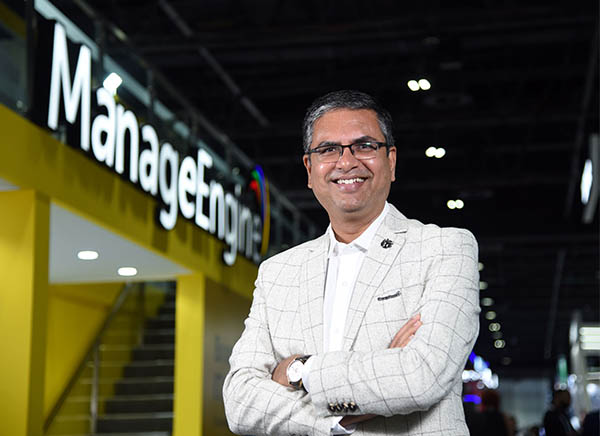
Since the start of the pandemic, there have been immense changes in how employees interact with IT tools and teams. Across the board, enterprises are seeing more collaboration between non-IT employees and IT personnel, and this collaboration can be, at least in part, attributed to IT decentralization and democratization. In the increasingly digital-first, hybrid work environment, we have five predictions that are likely to come to fruition.

Rajesh Ganesan, President at ManageEngine said “In the current digital-first, hybrid work environment, more employees than ever are deciding for themselves how their technologies will be chosen, deployed, and used, which has led to an increase in the use of low/no-code solutions. Also, AI models will continue to evolve; scalable platforms will be preferable to individual tools, and enterprises will make some tough hiring decisions in 2023.”
1. Enterprise-IT will evolve into enterprise-wide IT
We will continue to see the decentralization of IT personnel. Not only will most enterprises have a centralized IT group to handle requirements like systems deployment, cybersecurity, compliance, and threat detection, but these enterprises will also have IT personnel throughout the organizational chart, addressing specialized business-driven needs as they arise. As technological expertise continues to permeate throughout enterprises, non-IT employees and IT-adjacent service delivery teams will use low/no-code platforms to build and deploy simple applications. According to a recent ManageEngine study – IT at Work: 2022 & Beyond, 42% of global IT decision-makers believe that each department will have its own IT team in the next five years.
2. The tool vs. platform debate will be laid to rest
Businesses of various sizes and stages of development have adopted various strategies, particularly when it comes to the administration of their technological infrastructure. Some people decided to use a particular tool for each issue, while others invested in a platform that could grow to address issues as they came up. The platform alternative is far more effective. Having a solution for every issue doesn’t help businesses keep up with shifting customer needs. More and more businesses will choose to manage their technological infrastructure using a comprehensive, scalable platform.
3. We will see unified service delivery designed for remote-first employees
Companies will streamline their enterprise services by using one centralized platform for managing them. This will help remote workers have a more efficient work environment, no matter where they are located. Employees will be able to easily access IT resources and request services through a single portal. They will also be able to perform tasks such as onboarding new remote workers, reserving corporate spaces, and submitting travel expenses.
4. AI models will continue to evolve
In 2023, we will see AI models with better precision, being built with a limited amount of training data. Techniques like few-shot learning and transfer learning will see increased adoption, and the gap between natural language processing (NLP) and computer vision (CV) will continue to blur. As an example, we’re already seeing applications that allow us to search through a recording for a particular topic; then, by conversing with a chatbot, we’re brought to the relevant timestamps.
AI regulation is also on the horizon. As we saw with data privacy legislation (GDPR), this regulation will come from the European Union. Set to become law in 2023, the E.U.’s AI Act could start being enforced as early as 2024.
5. Finding and reskilling technology talent will continue to be a challenge
The rapid evolution of technology and the changing business landscape has put pressure on businesses to find and retain talent; the question of whether enterprises should find fresh talent or reskill existing employees is one that enterprises will have to make.
In the wake of the Great Resignation, some companies assumed it would be easy to find new talent, but that hasn’t been the case, especially regarding software-engineering workers. Factors like diversity and inclusion will continue to influence hiring decisions, and at ManageEngine, we believe that continuing to train, educate, and foster the careers of existing employees is the best course of action. That said, enterprises will have to choose for themselves how best to proceed.
